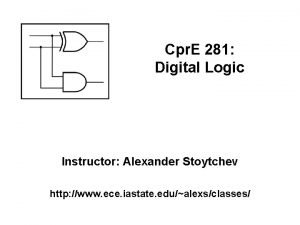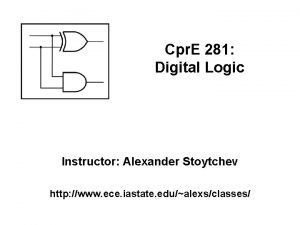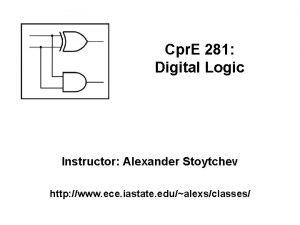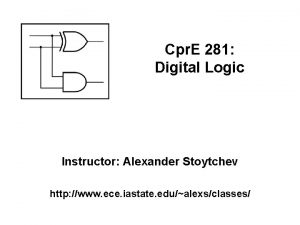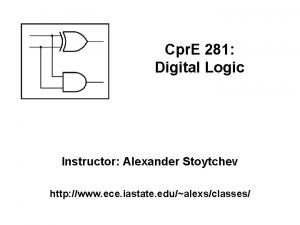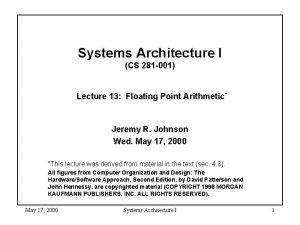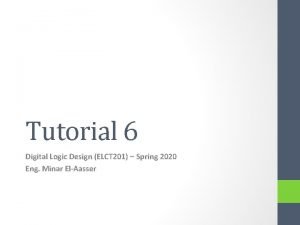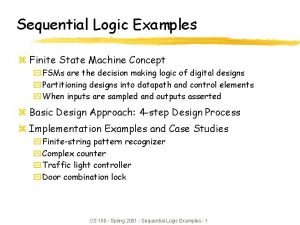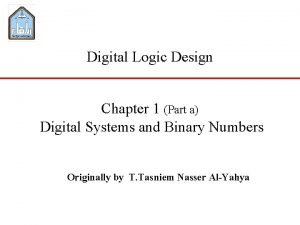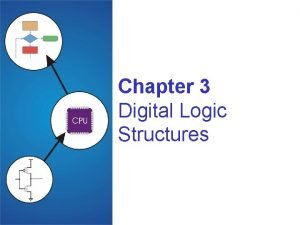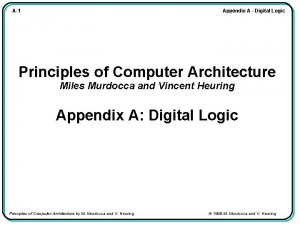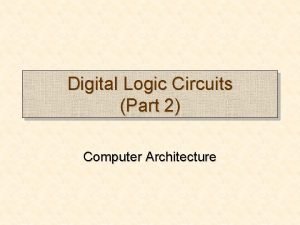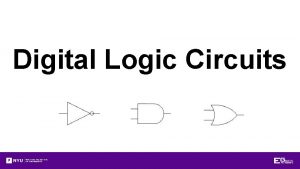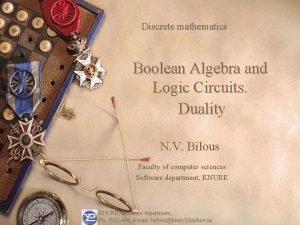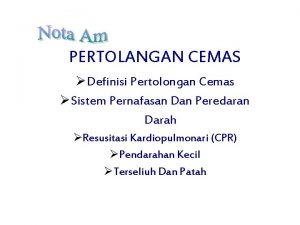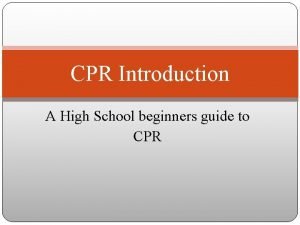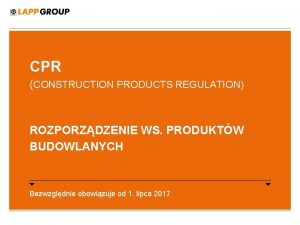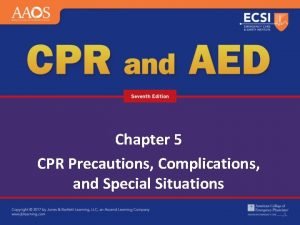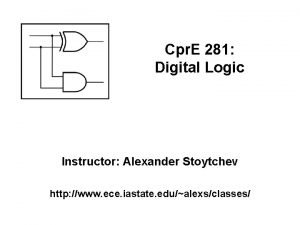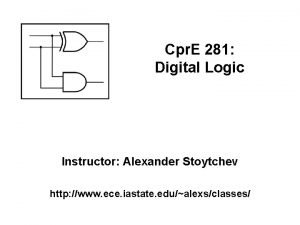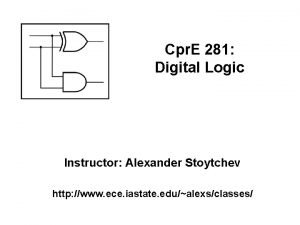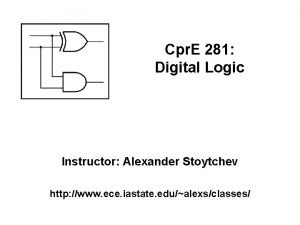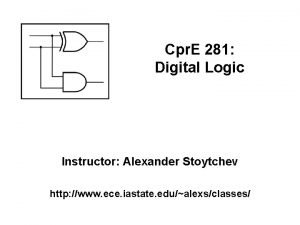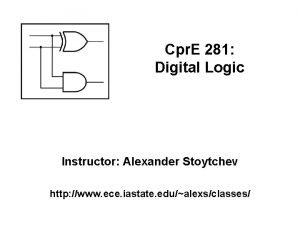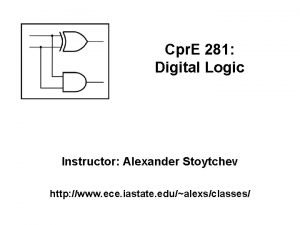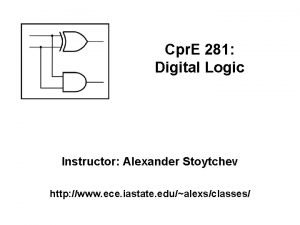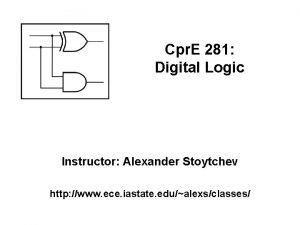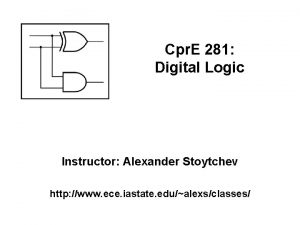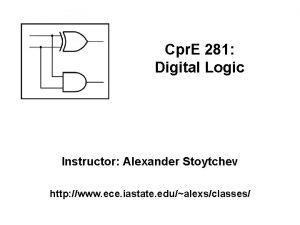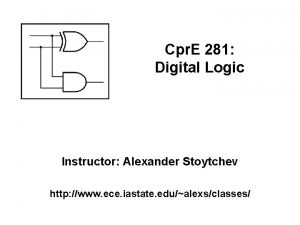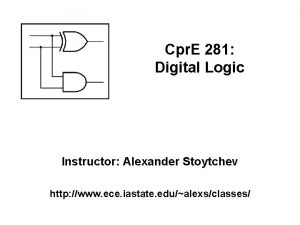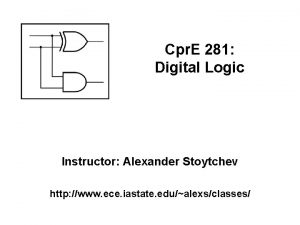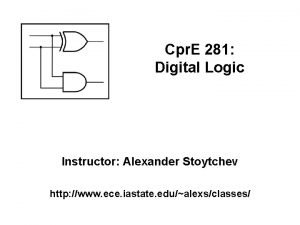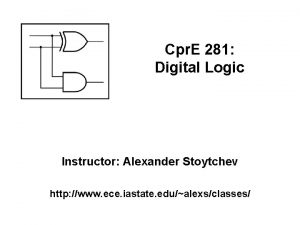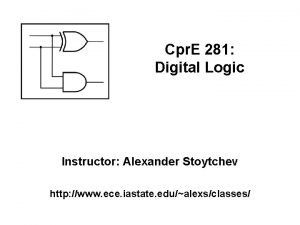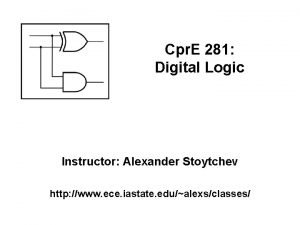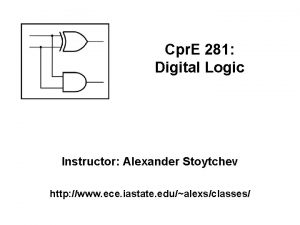Cpr E 281 Digital Logic Instructor Alexander Stoytchev









































![Display of numbers [ Figure 2. 34 from the textbook ] Display of numbers [ Figure 2. 34 from the textbook ]](https://slidetodoc.com/presentation_image_h/1807aed8f970d88208a8c0d8f9a925fc/image-42.jpg)






![[ Figure 2. 35 from the textbook ] [ Figure 2. 35 from the textbook ]](https://slidetodoc.com/presentation_image_h/1807aed8f970d88208a8c0d8f9a925fc/image-49.jpg)








![2 -1 Multiplexer [ Figure 2. 36 from the textbook ] 2 -1 Multiplexer [ Figure 2. 36 from the textbook ]](https://slidetodoc.com/presentation_image_h/1807aed8f970d88208a8c0d8f9a925fc/image-58.jpg)






























![A logic circuit with two modules [ Figure 2. 44 from the textbook ] A logic circuit with two modules [ Figure 2. 44 from the textbook ]](https://slidetodoc.com/presentation_image_h/1807aed8f970d88208a8c0d8f9a925fc/image-89.jpg)
![The adder module [ Figure 2. 12 from the textbook ] The adder module [ Figure 2. 12 from the textbook ]](https://slidetodoc.com/presentation_image_h/1807aed8f970d88208a8c0d8f9a925fc/image-90.jpg)
![The adder module [ Figure 2. 45 from the textbook ] The adder module [ Figure 2. 45 from the textbook ]](https://slidetodoc.com/presentation_image_h/1807aed8f970d88208a8c0d8f9a925fc/image-91.jpg)






- Slides: 97

Cpr. E 281: Digital Logic Instructor: Alexander Stoytchev http: //www. ece. iastate. edu/~alexs/classes/

Intro to Verilog Cpr. E 281: Digital Logic Iowa State University, Ames, IA Copyright © Alexander Stoytchev

Administrative Stuff • HW 3 is due on Monday Sep 7 @ 4 p

Administrative Stuff • Sample homework solutions are posted on Canvas • Look under ‘Files’

Quick Review

The Three Basic Logic Gates x x NOT x y AND x y OR 0 1 1 0 0 0 1 1 0 1 0 1 1 1 x x y x • y x +y

AND with Switches

AND Circuit x=0 + Battery _ y=0 Light

AND Circuit x=0 + Battery _ y=1 Light

AND Circuit x=1 + Battery _ y=0 Light

AND Circuit x=1 + Battery _ y=1 Light

NOT with Switches

NOT Circuit Resistor + Battery _ x=1 Light

NOT Circuit Resistor + Battery _ x=0 Light

NAND with Switches

NAND Circuit Resistor + Battery _ x=0 Light y=0

NAND Circuit Resistor + Battery _ x=0 Light y=1

NAND Circuit Resistor + Battery _ x=1 Light y=0

NAND Circuit Resistor + Battery _ x=1 Light y=1

NOR with Switches

NOR Circuit Resistor + Battery _ x=0 y=0 Light

NOR Circuit Resistor + Battery _ x=0 y=1 Light

NOR Circuit Resistor + Battery _ x=1 y=0 Light

NOR Circuit Resistor + Battery _ x=1 y=1 Light

The Three Basic Logic Gates x x NOT x y AND x y OR 0 1 1 0 0 0 1 1 0 1 0 1 1 1 x x y x • y x +y

NAND and NOR x x x y NAND x y NOR 0 0 1 1 0 1 1 0 0 0 x • y x +y

XOR and XNOR x y XOR x y XNOR 0 0 1 1 0 1 0 1 1 0 0 0 1 1 0 0 1 x + y

XNOR with Switches

XNOR Circuit x=0 + Battery _ y=0 Light

XNOR Circuit x=0 + Battery _ y=1 Light

XNOR Circuit x=1 + Battery _ y=0 Light

XNOR Circuit x=1 + Battery _ y=1 Light

XOR with Switches

XOR Circuit x=0 + Battery _ y=0 Light

XOR Circuit x=0 + Battery _ y=1 Light

XOR Circuit x=1 + Battery _ y=0 Light

XOR Circuit x=1 + Battery _ y=1 Light

7 -Segment Display Example

7 -Segment Display a f g b c e d

Displaying Some Numbers a f g e d a b f c e g b c d

Displaying Some Hexadecimal Numbers a f g e d a b f c e g d a b f c e g d a b f c e g b c d
![Display of numbers Figure 2 34 from the textbook Display of numbers [ Figure 2. 34 from the textbook ]](https://slidetodoc.com/presentation_image_h/1807aed8f970d88208a8c0d8f9a925fc/image-42.jpg)
Display of numbers [ Figure 2. 34 from the textbook ]

Display of numbers

Display of numbers a = s 0 c = s 1 b=1 e = s 0 d = s 0 g = s 1 s 0 f = s 1 s 0

Intro to Verilog

History • Created in 1983/1984 • Verilog-95 (IEEE standard 1364 -1995) • Verilog 2001 (IEEE Standard 1364 -2001) • Verilog 2005 (IEEE Standard 1364 -2005) • System. Verilog 2009 (IEEE Standard 1800 -2009).

HDL • Hardware Description Language • Verilog HDL • VHDL

Verilog HDL != VHDL • These are two different Languages! • Verilog is closer to C • VHDL is closer to Ada
![Figure 2 35 from the textbook [ Figure 2. 35 from the textbook ]](https://slidetodoc.com/presentation_image_h/1807aed8f970d88208a8c0d8f9a925fc/image-49.jpg)
[ Figure 2. 35 from the textbook ]

Sample Verilog Program

The Three Basic Logic Gates x x NOT gate x 1 x 2 x 1 • x 2 AND gate x 1 x 2 x 1 + x 2 OR gate You can build any circuit using only these three gates [ Figure 2. 8 from the textbook ]

How to specify a NOT gate in Verilog x x NOT gate

How to specify a NOT gate in Verilog we’ll use the letter y for the output x y NOT gate

How to specify a NOT gate in Verilog x y NOT gate not (y, x) Verilog code

How to specify an AND gate in Verilog x 1 x 2 f= x 1 • x 2 AND gate and (f, x 1, x 2) Verilog code

How to specify an OR gate in Verilog x 1 x 2 f= x 1 + x 2 OR gate or (f, x 1, x 2) Verilog code

Specifying a 2 -to-1 Multiplexor in Verilog
![2 1 Multiplexer Figure 2 36 from the textbook 2 -1 Multiplexer [ Figure 2. 36 from the textbook ]](https://slidetodoc.com/presentation_image_h/1807aed8f970d88208a8c0d8f9a925fc/image-58.jpg)
2 -1 Multiplexer [ Figure 2. 36 from the textbook ]

Verilog Code for a 2 -1 Multiplexer [ Figure 2. 36 from the textbook ] [ Figure 2. 37 from the textbook ]

Verilog Code for a 2 -1 Multiplexer [ Figure 2. 36 from the textbook ] [ Figure 2. 37 from the textbook ]

Verilog Code for a 2 -1 Multiplexer [ Figure 2. 36 from the textbook ] [ Figure 2. 37 from the textbook ]

Verilog Code for a 2 -1 Multiplexer [ Figure 2. 36 from the textbook ] [ Figure 2. 37 from the textbook ]

Verilog Code for a 2 -1 Multiplexer k [ Figure 2. 36 from the textbook ] [ Figure 2. 37 from the textbook ]

Verilog Code for a 2 -1 Multiplexer k [ Figure 2. 36 from the textbook ] [ Figure 2. 37 from the textbook ]

Verilog Code for a 2 -1 Multiplexer k [ Figure 2. 36 from the textbook ] g [ Figure 2. 37 from the textbook ]

Verilog Code for a 2 -1 Multiplexer k [ Figure 2. 36 from the textbook ] g [ Figure 2. 37 from the textbook ]

Verilog Code for a 2 -1 Multiplexer k g h [ Figure 2. 36 from the textbook ] [ Figure 2. 37 from the textbook ]

Verilog Code for a 2 -1 Multiplexer k g h [ Figure 2. 36 from the textbook ] [ Figure 2. 37 from the textbook ]

Verilog Code for a 2 -1 Multiplexer k g h [ Figure 2. 36 from the textbook ] [ Figure 2. 37 from the textbook ]

2 -to-1 Multiplexor in Verilog (with abbreviated syntax)

Verilog Code for a 2 -1 Multiplexer [ Figure 2. 36 from the textbook ] [ Figure 2. 40 from the textbook ]

Verilog Code for a 2 -1 Multiplexer [ Figure 2. 36 from the textbook ] [ Figure 2. 40 from the textbook ]

Verilog Code for a 2 -1 Multiplexer [ Figure 2. 36 from the textbook ] [ Figure 2. 40 from the textbook ]

Verilog Code for a 2 -1 Multiplexer [ Figure 2. 36 from the textbook ] [ Figure 2. 40 from the textbook ]

2 -to-1 Multiplexor in Verilog (with behavioral specification)

Verilog Code for a 2 -1 Multiplexer [ Figure 2. 36 from the textbook ] [ Figure 2. 42 from the textbook ]

Verilog Code for a 2 -1 Multiplexer A 2 -to-1 Multiplexor has: • one output f • two inputs: x 1 and x 2 • It also has another input line s • If s=0, then the output is equal to x 1 • If s=1, then the output is equal to x 2 [ Figure 2. 36 from the textbook ] [ Figure 2. 42 from the textbook ]

Verilog Code for a 2 -1 Multiplexer A 2 -to-1 Multiplexor has: • one output f • two inputs: x 1 and x 2 • It also has another input line s • If s=0, then the output is equal to x 1 • If s=1, then the output is equal to x 2 [ Figure 2. 36 from the textbook ] [ Figure 2. 42 from the textbook ]

always@ syntax always @(x, y) always @(x or y) always @(*) always @*


Verilog Code for a 2 -1 Multiplexer [ Figure 2. 36 from the textbook ] [ Figure 2. 43 from the textbook ]

Another Example

Let’s Write the Code for This Circuit [ Figure 2. 39 from the textbook ]

Let’s Write the Code for This Circuit module example 2 (x 1, x 2, x 3, x 4, f, g, h); input x 1, x 2, x 3, x 4; output f, g, h; and (z 1, x 3); and (z 2, x 4); or (g, z 1, z 2); or (z 3, x 1, ~x 3); or (z 4, ~x 2, x 4); and (h, z 3, z 4); or (f, g, h); endmodule [ Figure 2. 39 from the textbook ] [ Figure 2. 38 from the textbook ]

Let’s Write the Code for This Circuit z 1 z 2 z 3 z 4 [ Figure 2. 39 from the textbook ] module example 2 (x 1, x 2, x 3, x 4, f, g, h); input x 1, x 2, x 3, x 4; output f, g, h; and (z 1, x 3); and (z 2, x 4); or (g, z 1, z 2); or (z 3, x 1, ~x 3); or (z 4, ~x 2, x 4); and (h, z 3, z 4); or (f, g, h); endmodule [ Figure 2. 38 from the textbook ]


Let’s Write the Code for This Circuit module example 4 (x 1, x 2, x 3, x 4, f, g, h); input x 1, x 2, x 3, x 4; output f, g, h; assign g = (x 1 & x 3) | (x 2 & x 4); assign h = (x 1 | ~x 3) & (~x 2 | x 4); assign f = g | h; endmodule [ Figure 2. 39 from the textbook ] [ Figure 2. 41 from the textbook ]

Yet Another Example
![A logic circuit with two modules Figure 2 44 from the textbook A logic circuit with two modules [ Figure 2. 44 from the textbook ]](https://slidetodoc.com/presentation_image_h/1807aed8f970d88208a8c0d8f9a925fc/image-89.jpg)
A logic circuit with two modules [ Figure 2. 44 from the textbook ]
![The adder module Figure 2 12 from the textbook The adder module [ Figure 2. 12 from the textbook ]](https://slidetodoc.com/presentation_image_h/1807aed8f970d88208a8c0d8f9a925fc/image-90.jpg)
The adder module [ Figure 2. 12 from the textbook ]
![The adder module Figure 2 45 from the textbook The adder module [ Figure 2. 45 from the textbook ]](https://slidetodoc.com/presentation_image_h/1807aed8f970d88208a8c0d8f9a925fc/image-91.jpg)
The adder module [ Figure 2. 45 from the textbook ]

The display module a = s 0 c = s 1 b=1 e = s 0 d = s 0 g = s 1 s 0 f = s 1 s 0

The display module a = s 0 b=1 c = s 1 d = s 0 e = s 0 f = s 1 s 0 g = s 1 s 0 [ Figure 2. 46 from the textbook ]

Putting it all together

Putting it all together

Questions?

THE END
 Stoytchev 281
Stoytchev 281 Stoytchev 281
Stoytchev 281 Cpr e 281
Cpr e 281 Alexander stoytchev
Alexander stoytchev What is this
What is this Ipx 281
Ipx 281 Cs 281 wordpress
Cs 281 wordpress It is a circular or elliptical anticlinal structure
It is a circular or elliptical anticlinal structure Weathering types
Weathering types Itslearningccisd
Itslearningccisd Cs 281
Cs 281 142 en numeros romanos
142 en numeros romanos 18 gelecek aylara ait giderler ve gelir tahakkukları
18 gelecek aylara ait giderler ve gelir tahakkukları Dönem ayirici hesaplar 180 181 280 281 380 381
Dönem ayirici hesaplar 180 181 280 281 380 381 First order logic vs propositional logic
First order logic vs propositional logic First order logic vs propositional logic
First order logic vs propositional logic Third order logic
Third order logic Combinational logic vs sequential logic
Combinational logic vs sequential logic Tw
Tw Project management plan example
Project management plan example Majority circuit
Majority circuit Combinational logic sequential logic 차이
Combinational logic sequential logic 차이 Logic chapter three
Logic chapter three Digital logic design tutorial
Digital logic design tutorial Fsm digital logic
Fsm digital logic Gate delays and timing diagrams
Gate delays and timing diagrams Digital logic design number system
Digital logic design number system Digital logic controller
Digital logic controller Canonical form digital logic
Canonical form digital logic Digital logic design practice problems
Digital logic design practice problems Digital logic identities
Digital logic identities Digital logic design lectures
Digital logic design lectures Digital logic structures
Digital logic structures Consensus digital logic
Consensus digital logic Bubble matching digital logic
Bubble matching digital logic Digital logic and computer architecture
Digital logic and computer architecture Uncommon logic digital
Uncommon logic digital Digital design
Digital design Duality in discrete mathematics
Duality in discrete mathematics Digital logic design
Digital logic design Bubble matching digital logic
Bubble matching digital logic Participante silencioso
Participante silencioso Tcole instructor course
Tcole instructor course Basic instructor course texas
Basic instructor course texas Basic instructor course #1014
Basic instructor course #1014 Pepperball launcher nomenclature
Pepperball launcher nomenclature Not only the students but also the instructor
Not only the students but also the instructor Instructor vs teacher
Instructor vs teacher Ospfv
Ospfv Mptc firearms instructor
Mptc firearms instructor Tcole advanced instructor course
Tcole advanced instructor course Basic instructor course texas
Basic instructor course texas The virtual instructor elements of art
The virtual instructor elements of art Nfpa 1403 instructor to student ratio
Nfpa 1403 instructor to student ratio Human factors instructor
Human factors instructor Instructor operating station
Instructor operating station Catia instructor
Catia instructor Instructor
Instructor Instructor responsibilities and professionalism
Instructor responsibilities and professionalism Tcole 1014 basic instructor course
Tcole 1014 basic instructor course Usmc jrotc vacancies
Usmc jrotc vacancies Nrp instructor toolkit
Nrp instructor toolkit Cisco instructor certification
Cisco instructor certification Wisconsin registry cbrf
Wisconsin registry cbrf Nra certified instructor logo
Nra certified instructor logo Naismith was an instructor of
Naismith was an instructor of Please clean your own room
Please clean your own room Tcole advanced instructor course
Tcole advanced instructor course Tcole advanced instructor course
Tcole advanced instructor course Jrotc marksmanship instructor course online
Jrotc marksmanship instructor course online Ames room
Ames room Cyan medical terminology
Cyan medical terminology Basic instructor course #1014
Basic instructor course #1014 Tcole basic instructor course
Tcole basic instructor course Delmar cengage learning instructor resources
Delmar cengage learning instructor resources Instructor office hours
Instructor office hours Extracorporeal cpr
Extracorporeal cpr 3 prinsip sebelum cpr kecuali
3 prinsip sebelum cpr kecuali Perbedaan cpr dan mpr
Perbedaan cpr dan mpr Pediatric life support algorithm
Pediatric life support algorithm High quality cpr infant
High quality cpr infant Cpr objectives
Cpr objectives Secondary survey definition
Secondary survey definition Llf in cpr
Llf in cpr Ems safety cpr
Ems safety cpr Sam approach cpr
Sam approach cpr Cpr hand placement sternum
Cpr hand placement sternum Cpr for beginners
Cpr for beginners The american heart association recommends child cpr for
The american heart association recommends child cpr for Pulse check in child cpr
Pulse check in child cpr Cab cpr meaning
Cab cpr meaning Dyrektywa cpr
Dyrektywa cpr Head tilt
Head tilt Cpr compression rate
Cpr compression rate Types of cpr
Types of cpr Do not start cpr in the following situations:
Do not start cpr in the following situations: Resuscitation triangle roles
Resuscitation triangle roles Centrum powiadamiania ratunkowego bydgoszcz
Centrum powiadamiania ratunkowego bydgoszcz
